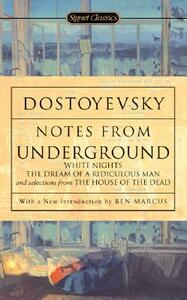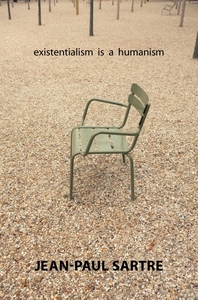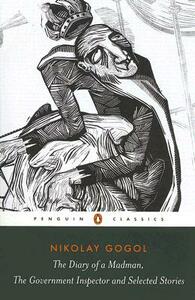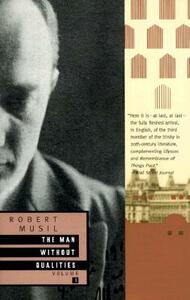Take a photo of a barcode or cover
screen_memory's Reviews (234)
Worth it just for Fartre's pinche ese's on Giacometti alone.
I was first introduced to Baudrillard via Simulacra and Simulation and immediately developed an affinity for the man and for his writings on the matter (my affinity being bolstered by my residence in the simulacra capital of the world). When I saw this chapbook at a bookstore while vacationing in New York I couldn’t resist it. I had never read any literature regarding architecture, nor had I an interest in doing so, but it was short, so why not?
My biggest issue with this text is what I interpret as Baudrillard’s reliance on the self-evidence of many terms and concepts he presents. Perhaps a contributing factor to my difficulty in understanding the text is my ignorance regarding architecture, but do we read such a one as Baudrillard because we are encountering his work after already having developed an expertise on the subject? Of course not. We encounter a text in order to seek its knowledge.
One of Baudrillard’s favorite terms in this work is “virtual,” yet nowhere in the text does he present his definition of the word even though understand its context is crucial to our understanding.
Baudrillard writes: “It’s the drama of contemporary architecture, this cloning to infinity of the same type of habitat throughout the planet according to functional parameters, or to a certain type of picturesque or typical architecture. This results in an architectural object that does not exceed its own project, and does not even exceed its own program.” What, Baudrillard, is the architectural object’s project, its program? What does it seek to accomplish by them?
When he writes of Beauborg, he says,”it’s a cultural object, a cultural movement of the obscure disaster of culture.” Just what, exactly, is the disaster of culture?
He continues: “This is what gives such architecture [of the World Trade Center] its power: it is both a form of extreme anticipation and of retrospective nostalgia for a lost object.”
This lost object being…? Perhaps he is referring to the lost object as the same cultural object the architecture of Beauborg signifies, architecture that “brings out, simultaneously, both culture and the thing to which culture succumbs more and more, the thing to which it has already succumbed — the perfusion, suffusion, and confusion of all signs.” If that is so, then what are all the signs that have become confused?
One would think that Baudrillard’s conception of the truth that architecture reveals, or fails to reveal, would be explained since this truth, comprising the premier question posed by the title of the essay, is necessary for allowing the essay a sort of coherence, but no explanation is offered. Is architecture’s truth emptiness, “the space that constitutes the primal scene of architecture, and…the radical nature of that space”? It is most likely not, as he concludes the paragraph by asking, “In other words: is it possible, given the radical nature of space [emptiness], to invent a truth of architecture?” So we must first determine whether or not such a truth must be invented while remaining unable to identify the constituents of such a truth? Or does Baudrillard overestimate the technical knowledge of his readers? (If he has, then he has truly overestimated mine).
In the accompanying essay, “Is There an Architectural Pact?” he is a bit more clear. In this essay he asks if there is an initiatory pact of architecture “that changes the coordinates of reality and illusion, this line beyond which visitors would find themselves initiated into another space, seduced by another object than that of their own daily routine?”
“In the past, everything was threatened by its double,” he writes. “Today it is threatened by its second home.” He wonders if architecture might be “running the risk of becoming, itself, the second home of space — a place where we try to save an endangered symbolical space, to create gasps, interstices in operational space, at base a spatial asylum, with little, preventative follies?”
Near the end of the essay he writes that architecture nowadays produces only monsters — “in that they do not reflect the integrity of a city, but rather its disintegration; not its organicism, but its disorganization.” It is a rather grim view of the architecture that defines the modern urban city.
“These, in reality, the devastated places, are all around. They are those of the city.”
My biggest issue with this text is what I interpret as Baudrillard’s reliance on the self-evidence of many terms and concepts he presents. Perhaps a contributing factor to my difficulty in understanding the text is my ignorance regarding architecture, but do we read such a one as Baudrillard because we are encountering his work after already having developed an expertise on the subject? Of course not. We encounter a text in order to seek its knowledge.
One of Baudrillard’s favorite terms in this work is “virtual,” yet nowhere in the text does he present his definition of the word even though understand its context is crucial to our understanding.
Baudrillard writes: “It’s the drama of contemporary architecture, this cloning to infinity of the same type of habitat throughout the planet according to functional parameters, or to a certain type of picturesque or typical architecture. This results in an architectural object that does not exceed its own project, and does not even exceed its own program.” What, Baudrillard, is the architectural object’s project, its program? What does it seek to accomplish by them?
When he writes of Beauborg, he says,”it’s a cultural object, a cultural movement of the obscure disaster of culture.” Just what, exactly, is the disaster of culture?
He continues: “This is what gives such architecture [of the World Trade Center] its power: it is both a form of extreme anticipation and of retrospective nostalgia for a lost object.”
This lost object being…? Perhaps he is referring to the lost object as the same cultural object the architecture of Beauborg signifies, architecture that “brings out, simultaneously, both culture and the thing to which culture succumbs more and more, the thing to which it has already succumbed — the perfusion, suffusion, and confusion of all signs.” If that is so, then what are all the signs that have become confused?
One would think that Baudrillard’s conception of the truth that architecture reveals, or fails to reveal, would be explained since this truth, comprising the premier question posed by the title of the essay, is necessary for allowing the essay a sort of coherence, but no explanation is offered. Is architecture’s truth emptiness, “the space that constitutes the primal scene of architecture, and…the radical nature of that space”? It is most likely not, as he concludes the paragraph by asking, “In other words: is it possible, given the radical nature of space [emptiness], to invent a truth of architecture?” So we must first determine whether or not such a truth must be invented while remaining unable to identify the constituents of such a truth? Or does Baudrillard overestimate the technical knowledge of his readers? (If he has, then he has truly overestimated mine).
In the accompanying essay, “Is There an Architectural Pact?” he is a bit more clear. In this essay he asks if there is an initiatory pact of architecture “that changes the coordinates of reality and illusion, this line beyond which visitors would find themselves initiated into another space, seduced by another object than that of their own daily routine?”
“In the past, everything was threatened by its double,” he writes. “Today it is threatened by its second home.” He wonders if architecture might be “running the risk of becoming, itself, the second home of space — a place where we try to save an endangered symbolical space, to create gasps, interstices in operational space, at base a spatial asylum, with little, preventative follies?”
Near the end of the essay he writes that architecture nowadays produces only monsters — “in that they do not reflect the integrity of a city, but rather its disintegration; not its organicism, but its disorganization.” It is a rather grim view of the architecture that defines the modern urban city.
“These, in reality, the devastated places, are all around. They are those of the city.”
A great introduction to Sartre's conception of existentialism and phenomenology. Recommended for those looking to delve into his denser works. In addressing the charges leveled upon him and upon existentialism (charged as a philosophy of quietism; a philosophy that turns its back on man), Sartre expounds on the premiere concerns of the philosophy. Existentialism Is a Humanism serves as a sort of Sparksnotes for existentialism.







